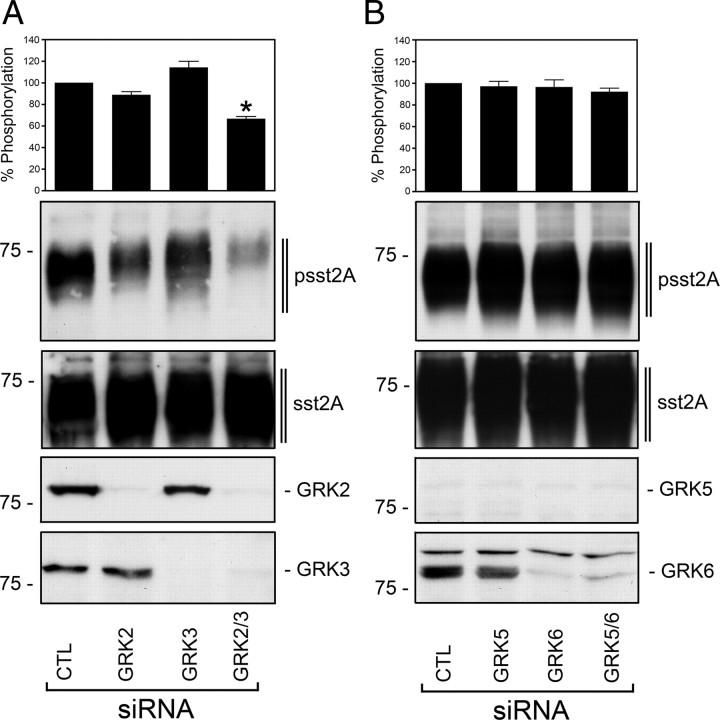Fig. 3.
GRK2 and GRK3 are responsible for agonist-induced sst2A phosphorylation. HEK293 cells stably expressing sst2A were transfected with the indicated siRNAs for 72 h and then exposed to 1 μm of SS-14 for 5 min. A, Transfection with siRNA targeted to GRK2, GRK3, GRK2 and GRK3, or nonsilencing siRNA control (CTL). B, Transfection with siRNA targeted to GRK5, GRK6, GRK5 and GRK6, or nonsilencing siRNA control. Equal protein levels were used for visualization of total and phosphorylated receptor levels and GRKs by Western blot analyses as described in Materials and Methods. The sst2A phosphorylation was quantified and expressed as percentage of the maximal phosphorylation in stimulated CTL siRNA-transfected cells. Data correspond to the mean ± sem from at least four independent experiments performed in duplicate. The results were analyzed by two-way ANOVA followed by the Bonferroni posttest (*, P < 0.05). Note that coexpression of GRK2 and GRK3 siRNAs resulted in a significant decrease of receptor phosphorylation. The positions of molecular mass markers are indicated on the left (in kilodaltons).

